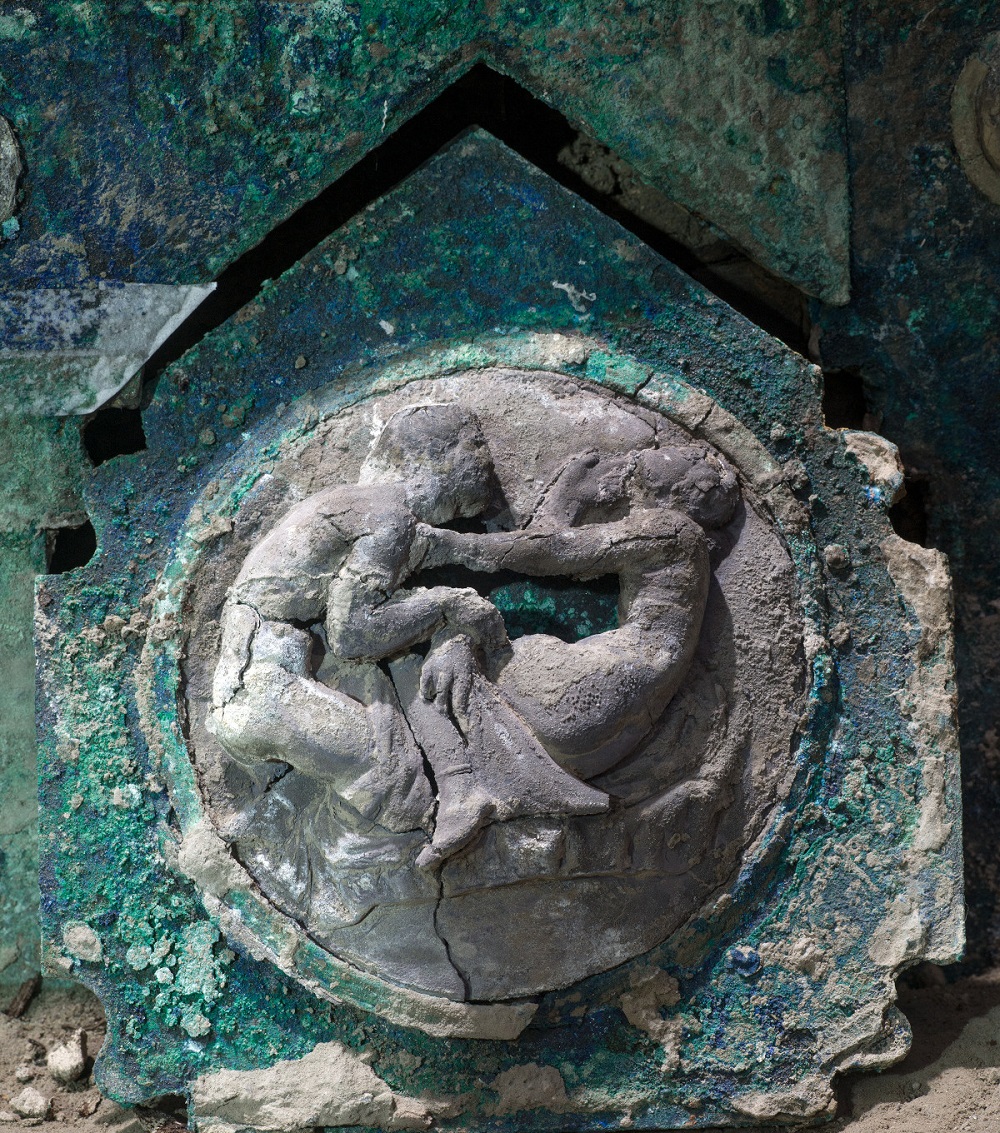The ‘Arte e Sensualita Nella Case Di Pompei’ exhibition includes around 70 relics, including frescos, marble sculptures and medallions. — Picture courtesy of Pompeii via ETX Studio
POMPEII, April 26 — For lack of first-hand testimonies, historians turn to the frescoes and other archaeological objects discovered in Pompeii to find out about the customs and behaviour of the Romans.
A new exhibition at the archaeological museum of Pompeii offers a glimpse into the sex lives of residents of the ancient city.
Sex was omnipresent in Pompeii. Rare were the houses and public buildings that were not decorated with explicit paintings and frescoes. But this erotic art was not viewed as obscene or scandalous, explain the curators of “Arte e Sensualita Nella Case Di Pompei.”
This exhibition brings together nearly 70 relics, including frescoes, marble sculptures and medallions. Most of them were discovered on the archaeological site during recent excavations.
This is the case of two medallions decorated with satyrs and nymphs, which once adorned a ceremonial chariot. This four-wheeled carriage was found last year in Civita Giuliana, a neighbourhood located a few hundred meters north of the archaeological park of Pompeii.
Visitors to “Arte e Sensualita Nella Case Di Pompei” can also admire a mural, discovered in 2018 at the archaeological site. It represents Priapus, the god of fertility, weighing his penis on a scale.
Another erotic fresco, unearthed the following year, shows the princess of Sparta, Leda, being impregnated by Zeus, transformed into a swan.
An abundance of erotic images
According to Gabriel Zuchtriegel, director of the archaeological park of Pompeii, the Romans had a less prudish relationship to the body and sexuality than we do today.
“Obviously, rich people’s homes had more paintings but [erotic images] were really very common in Pompeii,” he told The Guardian.
“Much had to do with how the Romans used Greek culture as a cultural code, as a lot of the art reflects Greek myth and stories taken from Greek traditions.”
In this sense, visitors to the exhibition are invited to walk through the archaeological site of Pompeii, equipped with an application, to admire the lascivious frescoes of some homes in the Via del Vesuvio.
As historians have pointed out, these erotic scenes were everywhere and in full view of everyone, including women and children. The Romans considered sex as a sacred pleasure, which explains the abundance of erotic images in the city and in homes.
However, the Romans were not without their taboos. These were mainly based on social hierarchies, and certain sexual practices such as fellatio, sodomy and cunnilingus were reserved for prostitutes and slaves of both sexes.
This complex sexuality, less liberated than it seems, is explored until January 15, 2023, at the archaeological park of Pompeii. — ETX Studio


